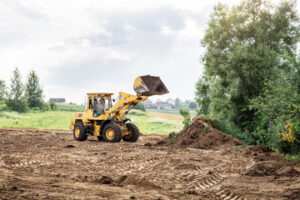Never enter a septic tank, it can be extremely dangerous due to toxic gases and lack of oxygen. All work should be done from the outside of the tank.
Chemical and biological additives can affect how well the bacteria inside the septic system functions and disrupt the natural process of settling and decomposition. Flushing non-biodegradable waste items like cigarette butts, cotton buds/swabs, and menstrual hygiene products can also clog the system or reduce its effectiveness. Click the https://www.septictankarmadale.com.au/ to learn more.

When the time comes to have your septic tank pumped, a professional will show up with a truck and a giant hose that will essentially “suck” the waste out of your septic tank. This sewage will then be transported to a sewage processing facility and safely processed. It is essential to have your septic tank pumped regularly to prevent clogs and overflows.
The frequency of septic tank pumping depends on household size and the capacity of your septic tank. Larger households tend to use more water and put more solids into a septic system than smaller homes. Homes with children also put more solids into a septic tank than empty nesters. These factors can cause a septic tank to fill up more quickly, which requires it to be pumped out more frequently.
Another factor that influences the frequency of septic tank pumping is how solid materials are disposed of. Solids that enter a septic tank are collected at the bottom in a thick layer known as sludge. Grease and other lightweight materials float to the top of the septic tank and are referred to as scum. These solids are slowly biodegraded by microbes in the septic tank and are carried from the septic tank to the soil absorption area where they are absorbed into the ground. Over time, these solids can clog the soil and restrict wastewater flow, which is when problems start to occur.
During the septic tank pumping process, your professional will inspect your septic tank and system for damage or signs of a leak. It is recommended that you schedule a septic tank inspection and maintenance service every two to three years.
When a septic tank is being pumped, it is also a great opportunity for your professional to inspect and clean the inlet and outlet baffles of your septic tank. These baffles restrain and redirect the flow of incoming and outgoing sewage inside the tank, which help to prevent sludge from clogging up both inlet and outlet pipes. They are important to keep in good working condition, so ask your septic tank technician if they would be willing to include a baffle inspection with every septic tank pumping.
Inspection
Septic tanks are the foundation of a septic system, and it’s important to keep them well maintained. If you do, your septic tank system will protect your home from expensive sewage backups, and you’ll enjoy peace of mind knowing that your wastewater is treated on site and not sent to a sewer plant for processing.
A septic tank is a large underground chamber through which domestic wastewater (sewage) flows for basic onsite sewage treatment. Incoming sewage undergoes settling and anaerobic digestion to remove solids and organics and make it into a liquid. This liquid, known as effluent, is absorbed into the soil through a drainage field. The absorption field, which is buried under the ground, further treats the water. A septic tank-soil absorption system is the most common type of septic system in rural areas.
Solids that remain in the septic tank settle at the bottom and form a sludge layer. Lighter liquids, such as grease and oil, float to the top of the tank and form a scum layer. Solids and scum are removed from the wastewater during pumping, and this helps prevent the waste in the drain fields and soil from prematurely clogging the system.
Bacteria inside the septic tank generate gases as they break down contaminants. These gases must be vented, and the vent is usually a mushroom-shaped device. This also reduces odors. It’s important to maintain the vent and replace the cap when you’re having routine septic tank pumping done.
A failing septic tank can result in raw sewage backing up into your toilets and sinks, which can be dangerous to your health. If you’re concerned about the condition of your septic tank, consider having a professional inspector look at it soon.
You should avoid planting any plants with deep roots near your septic tank or drain field. These can wreak havoc on the drain lines and the septic tank itself. Also, don’t dispose of chemicals or salt down your drains, as they can damage the septic tank and its components. Finally, only plant grass or other shallow-rooted plants around the septic tank and drain field.
Repairs
The septic tank is a vital part of the home plumbing system. If it becomes clogged, your whole house can experience plumbing backups and foul smells. It can also lead to sewage leaks that contaminate your soil and water supply.
A professional septic technician can identify and repair a variety of problems. They may be able to fix a broken septic tank drain line, replace a cracked tank lid or even install a new septic tank. However, these tasks can take a considerable amount of time to complete. Weather conditions can also delay the work of septic tank experts. Heavy rains or extreme temperatures can make it difficult to dig or access your septic tank and drain field.
A septic tank can crack, corrode or even collapse if it is not emptied regularly and inspected by a professional. Severely corroded tanks are not safe, as they can leak sewage into the soil or groundwater. They can also collapse and cause a hazardous situation for people and pets.
Your septic tank is a complex container that separates solid waste from liquid wastewater, known as effluent. The septic tank then directs the wastewater to a drain field for absorption or evaporation. If your septic tank is leaking, it is likely that the baffles in the tank have become diseased. This will cause the system to fail by not separating solids from the wastewater.
Replacing these diseased baffles will restore the effectiveness of your septic system and save you money in the long run. It is also a good idea to replace these baffles when your septic tank is pumped so that they are clean and ready for the next load of sewage.
It is possible to prevent many septic tank issues by having your tank pumped every three to five years, and by having a professional inspect your septic tank annually. This will let a pro spot problems before they become serious, saving you time and money in the long run. In addition, limiting your use of chemicals that enter the septic tank can help keep the system healthy and working properly.
Installation
The installation process is where your septic system begins to take shape. It involves turning blueprints and tests into a functional wastewater treatment system. Before the installation starts, it’s important to talk with a local contractor and understand whether your property requires a building permit, specialized equipment, a licensed electrician, or more before the job can begin.
A septic tank is a water-tight container buried underground. Wastewater from toilets, showers, and washing machines flows into it. Heavy solids sink to the bottom of the tank where bacterial activity breaks them down into sludge. Lighter solids, such as fats and oils, float to the top of the tank where they partially decompose into a layer of scum. The liquid wastewater (effluent) exits the tank through a T-shaped outlet.
Once the septic tank is installed, the effluent flows into what’s called an absorption field or a drain field. This is a series of pipes that are laid out in gravel trenches. The soil and grass below the pipe trenches filter and absorb the septic tank effluent.
Depending on where you live, you may be able to reuse the septic system’s effluent for watering your lawn and garden. This is possible because the bacteria that eats the harmful waste in your septic tank can also help to fertilize your plants. However, it is important to check with your local health department before reusing this water.
It’s also important to keep in mind that your septic system relies on you to help it stay healthy. To do this, you should avoid using too much water at once. Take shorter showers, for example, and wash laundry over several days instead of back-to-back. This will reduce the amount of wastewater that goes into your septic system and keep the drain field from overflowing. You should also avoid pouring household cleaners, solvents, paints, and chemicals down your septic system. These can cause the microorganisms that break down the waste to die, leading to a toxic liquid that could enter your local water supply. This can lead to disease and put thousands of people’s health at risk.








